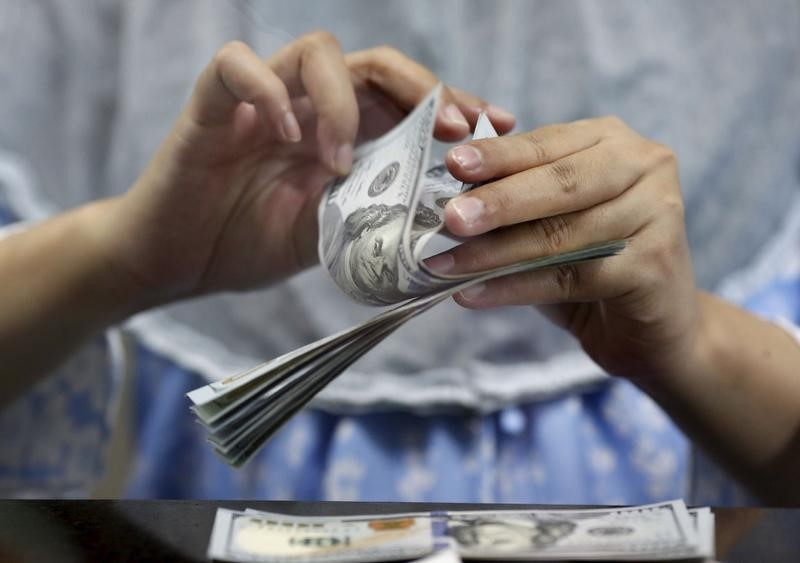Investing.com – The U.S. dollar stabilized in early European hours Monday after suffering its worst weekly drop this year, while weak Chinese growth data pressured the yuan.
At 03:05 ET (07:05 GMT), the , which tracks the greenback against a basket of six other currencies, traded marginally lower at 99.597, after dropping 2.2% last week, its sharpest one-week fall since November.
Dollar stabilizes after selloff
The dollar index last week fell below the 100 level for the first time since April 2022 after softer-than-expected inflation data– on Wednesday and on Thursday–supported the view that the Federal Reserve will end its interest rate-hiking cycle after a final increase next week.
“Dollar long positions are evaporating rapidly, with PPI numbers all but confirming the disinflationary narrative in the U.S. It’s hard to find a clear counterargument against the bearish dollar momentum, but the move is looking stretched, so watch for potential temporary corrections,” said analysts at ING, in a note.
The is due later in the session, to be followed later in the week by U.S. , and reports on , and .
However, these numbers are unlikely to change the narrative that a 25-basis-point hike from the later this month is likely to be the last one this year.
Chinese growth slows in second quarter
rose 0.5% to 7.1744 after data released earlier Monday showed China’s second-quarter grew 0.8% from the prior quarter, a substantial slowing from the 2.2% seen in the prior quarter.
On an annualized basis, grew 6.3% in the second quarter, thanks largely to a lower basis for comparison from the COVID-impacted period last year, and this was lower than expectations for growth of 7.3%.
This sluggish growth has traders looking towards the Chinese government to see whether it steps up stimulus to promote economic growth.
Euro still in demand
rose 0.1% to 1.1238, with the euro continuing to find favor after jumping 2.4% last week to a 16-month high.
The is widely expected to lift interest rates once more next week, with inflation levels in Germany, the largest economy in the euro one, rising in June to 6.8% on the year, when harmonized to compare with other European Union countries.
This is well over three times the ECB’s medium-term target and suggests further rate increases may well be needed as the year progresses.
“It seems difficult to build a strong counterargument to the bearish USD narrative at this stage and while some correction after a large and possibly overstretched move is possible, the near-term outlook may stay broadly bullish on EUR/USD,” ING added.
Elsewhere, edged lower to 1.3081, trading just below last week’s 15-month peak, while fell 0.2% to 138.47, with the yen boosted by falling U.S. bond yields, ahead of the ’s policy meeting next week.
fell 0.4% to 0.6809, with the Australian dollar suffering alongside the given the historic trade links between the two countries.
Read the full article here


